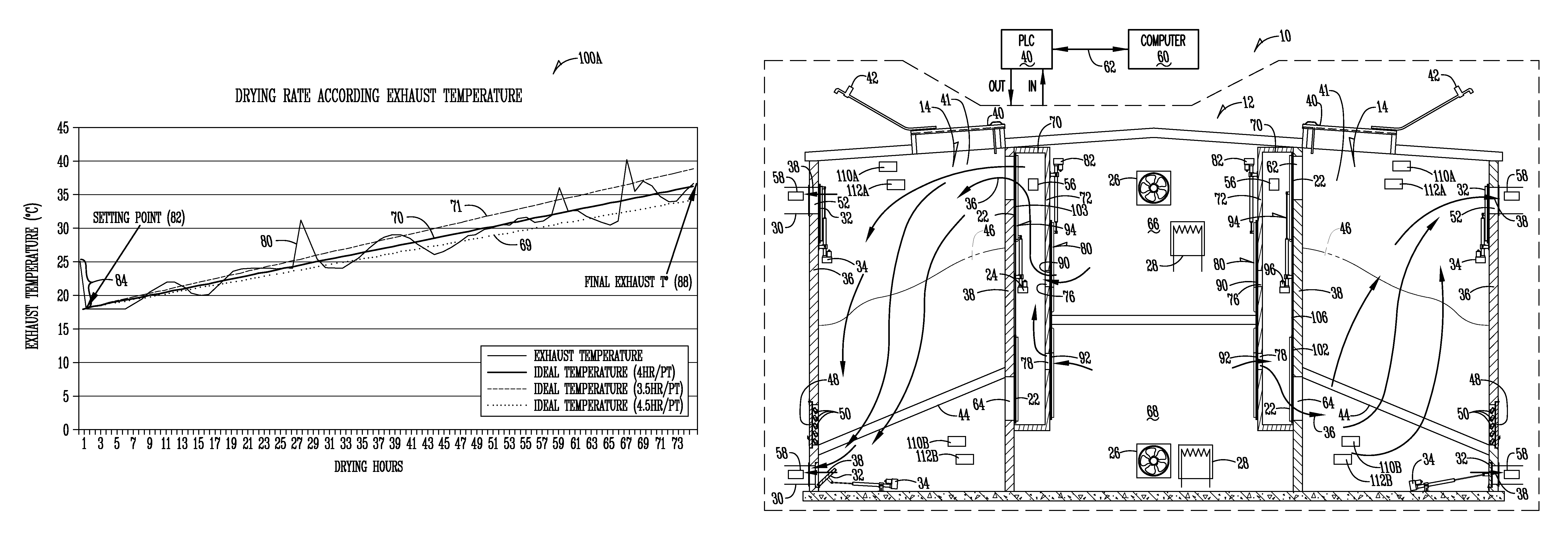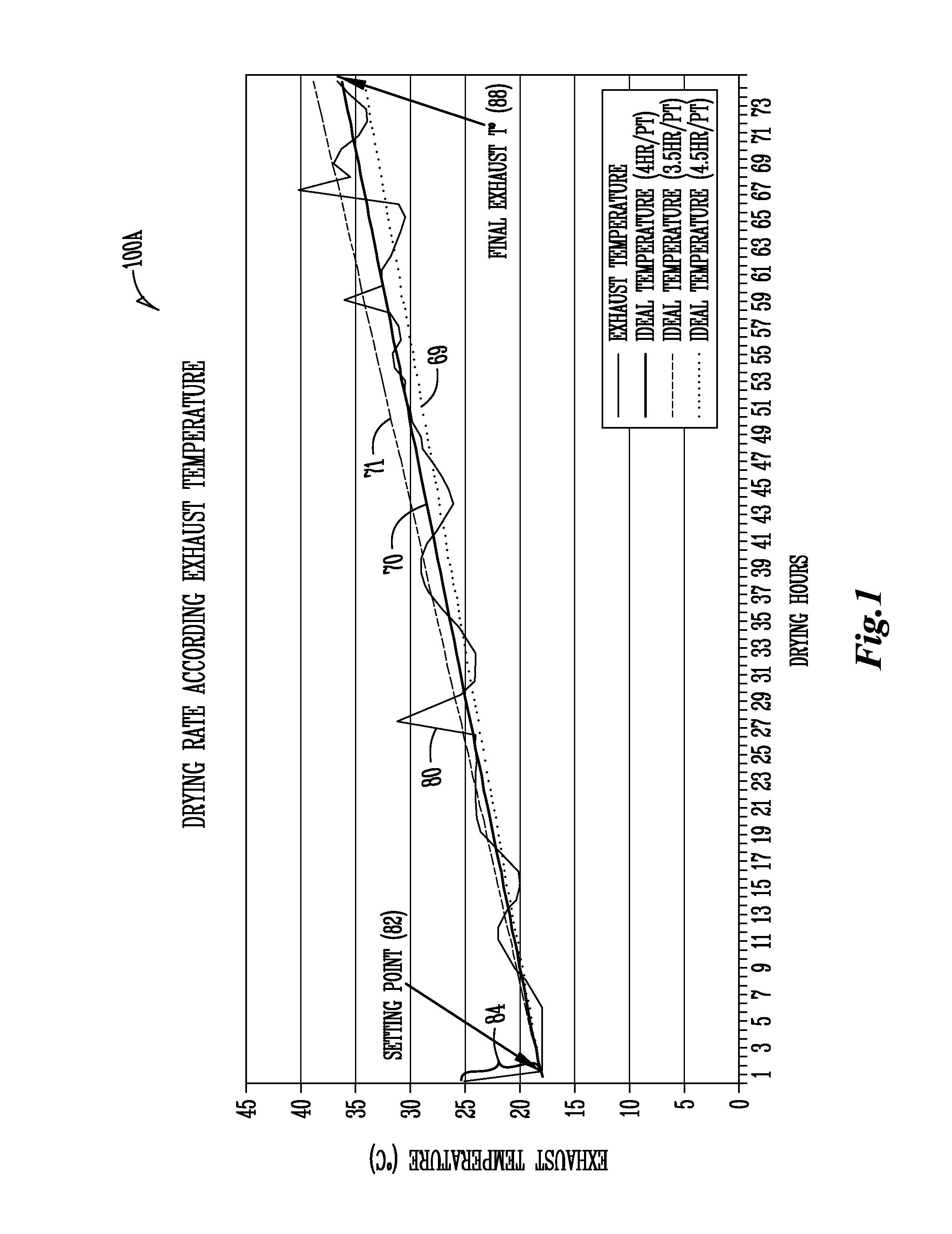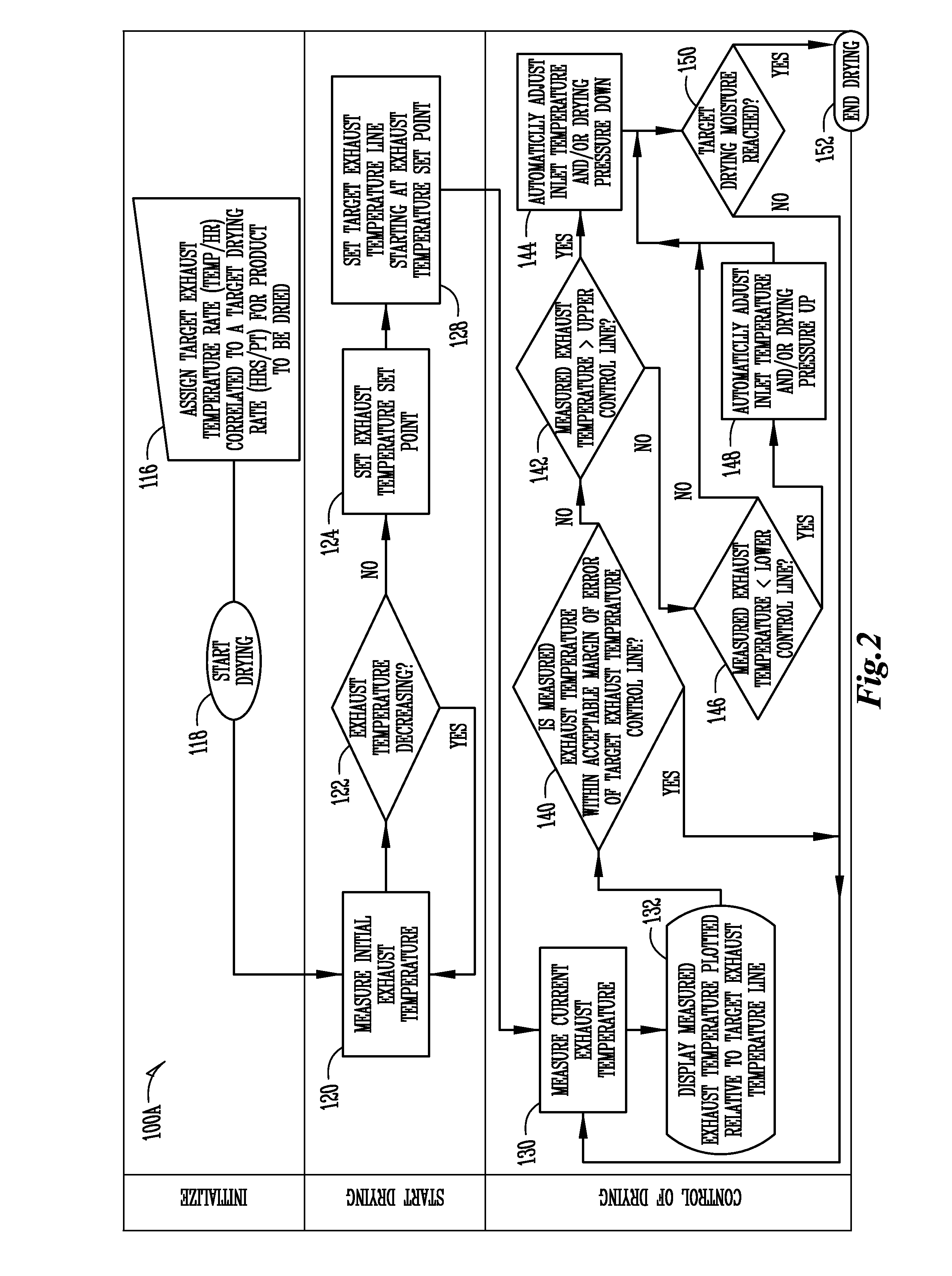Method, apparatus and system for controlling heated air drying
a technology of heated air drying and apparatus, applied in the direction of lighting and heating apparatus, drying machines with progressive movements, furnaces, etc., can solve the problems of limiting the temperature or drying rate of drying air, affecting the efficiency of heating air drying, etc., to achieve the effect of improving efficiency and throughpu
- Summary
- Abstract
- Description
- Claims
- Application Information
AI Technical Summary
Benefits of technology
Problems solved by technology
Method used
Image
Examples
example 1
Single Pass Dryer
[0210]In a first trial, a dryer like that of U.S. Pat. No. 5,893,218 was used under the following conditions:
[0211]
Products2 different typesTarget Drying Rate4 pts / hrControl linesThree at 3.5, 4.0, and 4.5 hrs / pt(with slope of the 4.0line being 0.25)Bin Filling Depth6-9 feetDrying factors utilized toInlet Air Temperature andcontrol ExhaustDrying PressureTemperatureNumber of Bins Analyzed23
[0212]Some results of the trials were:
[0213]
Range of Initial Moistures27-37%Range of Final Moistures11-13%Range of total Drying Hours71-105 Range of Drying Rates3.7-4.4
[0214]Results of the trials of this test are indicated in FIGS. 12A-C. FIG. 12A corresponds actual to target drying rate for trials without automatic control. The mean of the comparison was 1.152. FIG. 12B plots a comparison of actual to target drying rate for ADCS automatic control. The mean was 0.98.
[0215]FIGS. 13A and B are a set of graphical plots of measurements from one bin of these trials (bin number 109). ...
example 2
Double Pass Dryer
I. A trial was conducted with a dual pass dryer under following the same conditions as Example 1, with the following exceptions:
[0217]
Drying factors utilized to controlPrimarily Drying PressureExhaust TemperatureNumber of Bins Analyzed9
[0218]Results of these trials were:
[0219]
Range of Initial Moistures34-40%Range of Final Moistures 11-12.5%Range of total Drying Hours95-112 Range of Drying Rates3.5-4.0
[0220]As can be seen in FIGS. 15A and B, mean drying rate was slightly over 3.96 hrs / pt, with a standard deviation of 0.2496.
[0221]II. Another dual pass dryer trial was conducted under similar same conditions as section I, except that the lower control line was lowered slightly to correspond to commercial seed corn drying quality standards. It can be seen that mean drying rate also was around 3.96 hrs / pt, with a standard deviation of about 0.257 (see FIG. 16).
Options and Alternatives
[0222]The foregoing exemplary embodiments and examples are but a few forms that vari...
PUM
 Login to View More
Login to View More Abstract
Description
Claims
Application Information
 Login to View More
Login to View More - R&D
- Intellectual Property
- Life Sciences
- Materials
- Tech Scout
- Unparalleled Data Quality
- Higher Quality Content
- 60% Fewer Hallucinations
Browse by: Latest US Patents, China's latest patents, Technical Efficacy Thesaurus, Application Domain, Technology Topic, Popular Technical Reports.
© 2025 PatSnap. All rights reserved.Legal|Privacy policy|Modern Slavery Act Transparency Statement|Sitemap|About US| Contact US: help@patsnap.com



